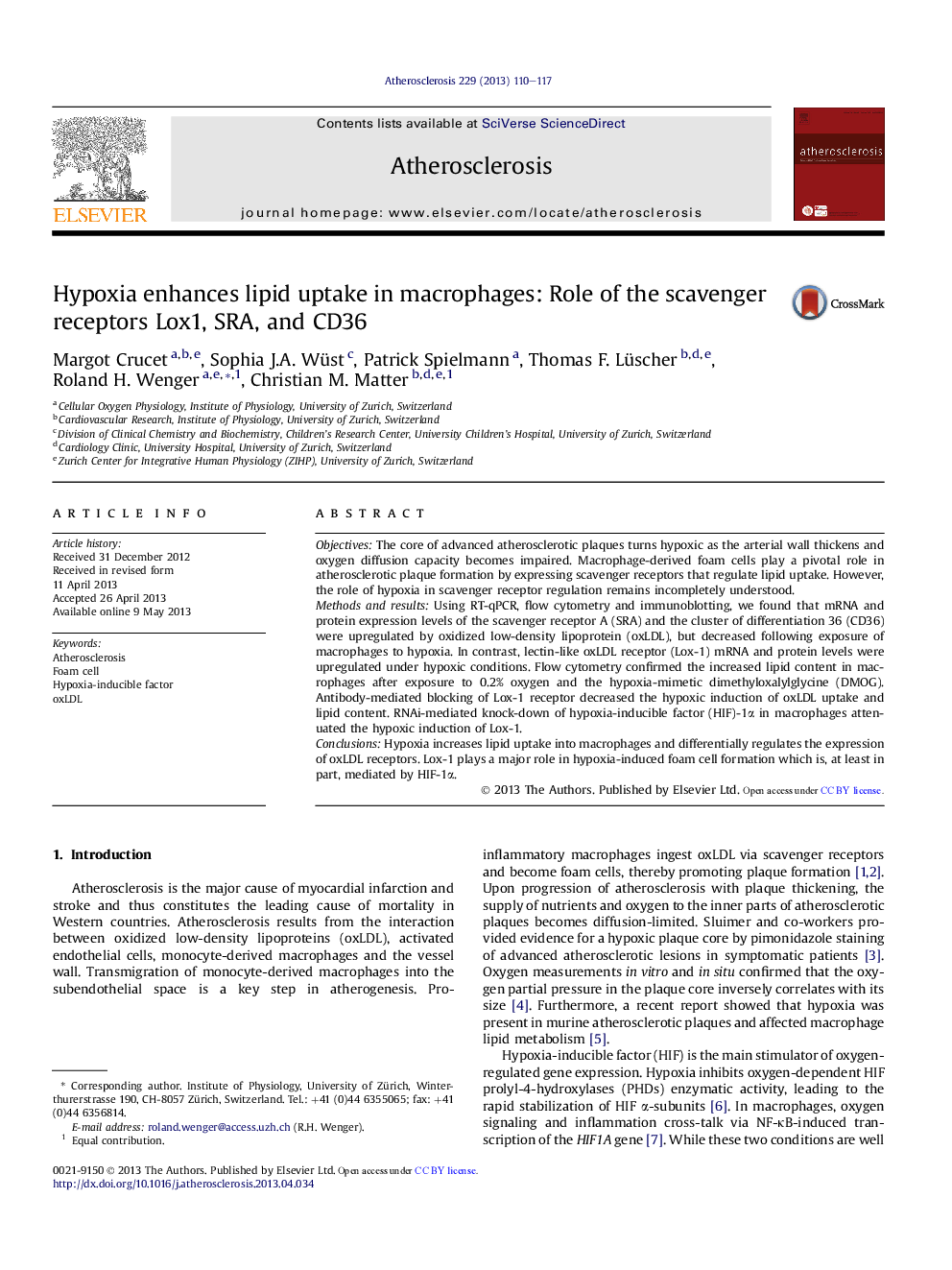| کد مقاله | کد نشریه | سال انتشار | مقاله انگلیسی | نسخه تمام متن |
|---|---|---|---|---|
| 5947838 | 1172374 | 2013 | 8 صفحه PDF | دانلود رایگان |

- Hypoxia enhanced the expression of scavenger receptor Lox-1 but attenuated oxLDL-induced SRA and CD36 in macrophages.
- Hypoxic induction of Lox-1 was HIF-1 dependent.
- Hypoxia increased both lipid content and oxLDL uptake by macrophages.
- Antibodies against Lox-1 blocked the hypoxic induction of lipid uptake.
ObjectivesThe core of advanced atherosclerotic plaques turns hypoxic as the arterial wall thickens and oxygen diffusion capacity becomes impaired. Macrophage-derived foam cells play a pivotal role in atherosclerotic plaque formation by expressing scavenger receptors that regulate lipid uptake. However, the role of hypoxia in scavenger receptor regulation remains incompletely understood.Methods and resultsUsing RT-qPCR, flow cytometry and immunoblotting, we found that mRNA and protein expression levels of the scavenger receptor A (SRA) and the cluster of differentiation 36 (CD36) were upregulated by oxidized low-density lipoprotein (oxLDL), but decreased following exposure of macrophages to hypoxia. In contrast, lectin-like oxLDL receptor (Lox-1) mRNA and protein levels were upregulated under hypoxic conditions. Flow cytometry confirmed the increased lipid content in macrophages after exposure to 0.2% oxygen and the hypoxia-mimetic dimethyloxalylglycine (DMOG). Antibody-mediated blocking of Lox-1 receptor decreased the hypoxic induction of oxLDL uptake and lipid content. RNAi-mediated knock-down of hypoxia-inducible factor (HIF)-1α in macrophages attenuated the hypoxic induction of Lox-1.ConclusionsHypoxia increases lipid uptake into macrophages and differentially regulates the expression of oxLDL receptors. Lox-1 plays a major role in hypoxia-induced foam cell formation which is, at least in part, mediated by HIF-1α.
Journal: Atherosclerosis - Volume 229, Issue 1, July 2013, Pages 110-117